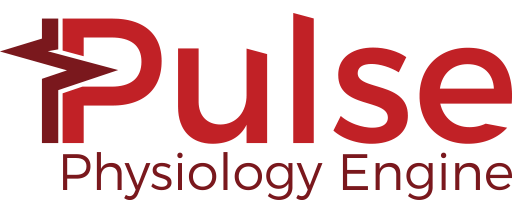Pulse Version 4.3.0 is available from our GitLab repository.
Implementation
Many of the physiology models in the engine are adapted or implemented directly from models described in literature. The implementation methodology is described in detail in the System Methodology and sub-system documentation. All of the source publications are cited in the methodology reports and listed in the Bibliography.
Common Data Model
The Pulse architecture is built around a Common Data Model and Software Framework that defines the key data structures as well as many implementations of common algorithms needed for lumped parameter physiology modeling.
Integration
One instance of a Pulse engine simulates one patient.
Pulse provides a Physiology Engine Interface for creation and control of an engine. This interface provides applications the ability to instantiate, advance time, execute various actions and retrieve a range of calculated physiological outputs.
Scenarios
Pulse supports a JSON based format for use in writing Scenario Files. A ScenarioDriver is provided to run these files and produce a CSV file for plotting data for the duration of the scenario.
Doxygen
The documentation generated on this website was provided in markdown and is generated by doxygen
Doxygen also generates the following resources:
More questions?
Visit our FAQ for more information about Pulse
